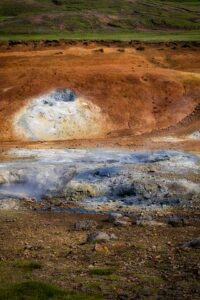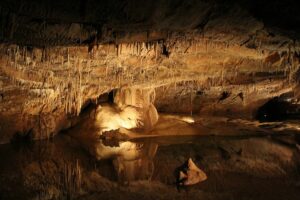One of the things that I find it vital to understand is the difference between lived, embodied experience and conceptual ideologies.
Put more simply, you can understand something from a book on an intellectual level, you can repeat it often to others, you can say it as a personal mantra, but until it is truly lived, truly expressed through the system (embodied) there will be a lack of understanding, a lack of nuance, and often a misunderstanding or skewing of the nature of the understanding.
For example, ideas of oneness sound really wonderful. The experience of states like this truly is, but if you hear about it from a book, you will cling to false notions of it.
For a long time I have been sitting with how spiritual knowledge is changed to meet current culture, and there is nothing that more expresses current, Westernized culture than the idea of rugged individualism.
So what happens is that people believe that they don’t need anyone else for healing, because they have all the answers and healing capacity within.
You then get the inevitable backlash– people saying that healing is a community affair, and self-help is bad. Which is of course correct (healing is required in community in many cases), but it is posed without nuance, always that pendulum swing in the opposite direction which creates a villain and a victor, a right and a wrong.
Such is binary reality, but the idea that we both have tremendous healing power within, and that we might need teachers and bodyworkers and other practitioners and wise individuals within our culture to help us to develop skills and awareness so we can access this tremendous healing power, to show us a map of their healing so we can heal, to offer the hearing and presence so we truly do not have to suffer the burden alone, is not often expressed through such pendulum swings.
Another thing I hear is that you can “ground within”; there are a lot of things I can discuss, but the idea that we contain everything within ourselves does not mean that we do not need to form external relationships.
A relationship with the Earth, truly grounding, allows for us to surrender. To experience and work through our relationship with death, with birth, with nurturing and being held by something much larger than ourselves– the great mother.
I see so many who don’t bother to find a teacher, who feel like they can educate themselves, and while in a few cases this has worked out well (especially for types that are truly “Other” who find their perspective cannot fit into systems or groups well, who have the drive and determination and curiosity and humility to truly educate themselves well), I have found that this type of rugged individualism leads people to chase their own tails for years or even decades on end, without much successful acquisition of said tail.
This is the impact of rugged individualism, of spiritual schisming, and of spiritual conceptual knowledge not meeting lived experience.
Knowledge or “truth” has layers. I talk about this a great deal in my work, especially in my Working with Kundalini book, but this type of perspective allows for individuals to both go beyond the binary reality victim-villain pendulum swings our society is so notorious for, as well as to go beyond rigid, and unhelpful (and often self-righteous) unlived, unembodied spiritual principles of singular “truth”.
To provide an example of this, I will talk about my layers of understanding of the concept of Dark Night of the Soul.
You will notice that none of these layers, or spirals, of knowledge is technically “wrong”. They are just varying perspectives, from surface level waves to ocean depths. The surface level waves (or Layers One and Two) are simply less educated, less nuanced, than the later perspectives.
Layer One
At first, I had the thought that most people do about this concept. That any time I felt spiritually “dark”, depressed, or disliked humanity, I felt as if it was a “dark night”.
In this type of understanding, I blamed the dark night, the depression, humanity, the world, my spiritual path (kundalini) for imposing such an experience on me.
Layer Two
This is when I began to read St. Teresa of Avila and eventually St. John of the Cross and his originating work on Dark Night of the Soul.
On my initial read I realized that a period of imprisonment (for him), darkness, suffering, and the worst of experiences that humanity could offer can and do plunge individuals into the depths of the ocean.
That being on the receiving end of the worst of humanity, the worst of circumstances, marks you in a profound way. That being marked like this causes for someone to go deep, to need to question, to need to find something larger than oneself.
I forgot who said this, but a notable author once said that “nobody with a normal childhood ever gets seriously into ritual magic (spiritual work)” and I find that this very much is true.
Those who have experienced the worst of humanity have questions that need to be answered, have a greater and larger search, than those who have not experienced those things. There is a hunger there, a need for depth, from such experiences that propels people.
Layer Three
After sitting with this concept for years, I realized that there is another concept contained within the “dark night”.
It is the experience of being in bliss, in ecstacy, in great peace or oneness, and then the crashing down from that state.
Even if your existence is somewhat to quite fine (to excellent), going from what amounts to a brightly lit room (enlightenment states, or highly realized states with oneness or ecstatic realization) back to “ordinary” reality is like plunging into a state of darkness.
Even when you are quite conscious, this is a hard shift. But this is an even harder shift if you are going from a state of ecstacy to a deep depression and longing for that state. It takes a lot to let go of this want, this need, for states like this, because it is something of a cosmic joke in that the more that you long for them, the more you grasp for them, the less likely they are to appear.
Layer Four
In this layer I recognized the “dark night” as a tremendous rewiring process. When consciousness expands, especially to states nearing enlightenment, the period of “darkness” after may be quite emotional (layer three) but what also happens when we heal large things or interface with large things is a tremendous expansion process.
This causes for a need for “rewiring”: for the organizational energies of the ego-mind, for our body, our life, our perspective, our way of being, to go into a period of “shut down”– similar to an electrician shutting of the power to the house to do some work– so there can be rewiring to support a new organization, a healthier and more expanded way of being in the world.
Many people are confused during these periods of time because there is often little access to the “spiritual” things that many people in these states are used to– intuition, guides, spiritual experiences, and so forth. This “black out” may include no interest in spiritual activities.
I find people try to force themselves through this period of time, but really the best advice I have is to rest, to support the new self emerging, to participate in “mundane” things that offer pleasure– creating, spending time with friends and family, and so forth.
Layer Five
In this layer I understood the “dark night of the soul” as a period of exponential growth.
While the previous layers are still true, depending on how you look at them (from which perspective of lived experience) when I re-read St John of the Cross recently, I was aware of now how he wasn’t treating this experience as a negative, as some darkness to traverse and simply get out from under as quickly as possible.
He was saying that in these states, there is tremendous opportunity for questioning, for depth, for insight, that is not available in other states.
In a state of ecstacy, or great silence, or bliss, you aren’t really thinking. In our normal states of consciousness, even if they are quite consciously aware, we have many things to attend to and our consciousness is often pulled away to the things we must do in our lives, to others, and to experiencing ourselves as sort of mid-ocean.
Many of our needs and thoughts are put on the back-burner, or are not allowed to blossom as they should.
Recently I have been attempting to get through the book Anatomy of Melancholy (if you have seen the size of this book you will understand my sentiment here) and I am struck by the depths that such states offer. The ability to truly question, to truly see and feel and experience reality with depth that other states do not afford.
We attempt to push them aside, or disregard them entirely (or pathologize them), and we truly should seek help for them if we are drowning in them, but being a point to sit with such forces (in my line of work melancholy or any other emotion or experience is an intelligent force that can be communed with) I notice the depth and intelligence of such states and that they are vital forces, ones that do truly allow for a depth of being in those who have claimed them as a part of themselves.
Also, there is a paradox that presents itself along the spiritual path. States that we would define as “dark”– trauma, depression, melancholy, rage, sadness, and so forth– paradoxically allow for us to experience the greatest light.
We cannot embody light unless we have lived our darkness.
Until we claim it as a part of ourselves. Otherwise we are in continual reaction to our distanced darkness, policing others for theirs, unhappy within ourselves because we are continually in reaction and pushing aside anything we have been told that is “dark”.
Perhaps somewhat ironically, this then not only affects our light but causes for us to distance ourselves from our joy, our peace, our love and compassion for others.
See how quickly someone with joy and enthusiasm in our culture is ridiculed, torn down, or violated by others, and you can clearly see the “shadows of light” in our world.
But also that the opening to such states, to such light, is a doorway that goes through darkness. Great pain and suffering allows for awakening. It allows for depth that creates questioning. It allows for the embodied experience of moving beyond that pendulum swing– this vs. that, true vs. false– to come to a middle point, to sort of fold over onto itself, so the experience of embodying light is often one in which darkness and light are experienced together.
They are no longer paradoxical, but needing to be experienced in wholeness within one another.
One thing you can notice from the following descriptions above is that I am leaving myself room for further exploration, for more layers and spirals and realizations.
Approaching the spiritual path with curiosity, humility, sincerity, and the openness of realizing of wherever you are, or wherever you perceive yourself to be, that there is a vastness of layers and spirals and unexamined depths to the nature of reality, is always my suggestion to people on how to proceed forward on a path that so many get so incredibly stuck on the surface layers of.
You can find my book, Working with Kundalini, as well as my other books, through the expected retailers.




So beautiful, helpful and insightful. Thank you for writing!
Beautiful, Dunja!
“Sweet Darkness”
a poem by David Whyte
When your eyes are tired
the world is tired also.
When your vision has gone
no part of the world can find you.
Time to go into the dark
where the night has eyes
to recognize its own.
There you can be sure
you are not beyond love.
The dark will be your womb
tonight.
The night will give you a horizon
further than you can see.
You must learn one thing.
The world was made to be free in
Give up all the other worlds
except the one to which you belong.
Sometimes it takes darkness and the sweet
confinement of your aloneness
to learn
anything or anyone
that does not bring you alive
is too small for you.
Hi Mary,
Thanks for another wonderful blog.
I totally agree with the statement ‘When the student is ready, the teacher appears’.
I was ready to go beyond the ‘bullshit’ that was creating a lot of confusion for me – the many mistruths that the ‘love & lighters’ often believe to be ‘true’ of spirits and the spiritual realms, often without themselves having had genuine spiritual experiences. I didn’t know that I was ‘Other’ and that these community members generally are not and therefore I wouldn’t ‘fit’.
I found my teacher, at the right time, through the most unsuspecting person – a previous work colleague/friend that I believe, many within the mainstream ‘spiritual communities’ that I was exposed to at the time, would be judgmental and critical of based on some of her previous life/career choices.
Due to her intelligence and sensitivities and her genuine desire to help a friend, I was led to finally find valuable teachings which have mostly resonated with me and which have allowed me to learn more about who I am. I would not have been able to progress on my spiritual path without these teachings.
This teacher is you Mary and I will be eternally grateful. Thank you.
I’m hoping that when I’ve healed more of my stuff and I’m ready for the next phase of my journey, that I will find another ‘great’ teacher (who will be ‘Other’ of course) and who is closer to home! – to guide me through this.
My biggest lesson in finding a teacher so far has been in ‘discernment’ – I find this integral in finding the ‘right’ teacher/healer – one who has dealt with enough of their own darkness to have the clarity, integrity and spiritual power to guide and support another in a real way.
Hi Richard-
In my line of work, I am on the receiving end of a lot of unfortunate patterns and energies. The belief that people don’t need a teacher is definitely one of them, but it of course is not applicable to everyone on the spiritual path. I do think that teachers can and do come in many different forms. While I have had a guru or two, my most important spiritual teachers have been herbalists, Chinese Medicine practitioners, and one-on-one healing sessions and workshops with CranioSacral therapists. I have friends who have found teachers that expanded their consciousness through woodworking, practical alchemy, blacksmithing, and so forth. In general I suggest people look for teachers who are educated and experienced, as well as have humility/humanity, as there is likely someone in your area, if you are looking for someone locally, who can teach you. It just may not be the exact avenue, subject matter, or title you may have envisioned.
I would also say that the idea of “when the student is ready” is really lovely, but in practical application, there is a tendency for people to think that it means that an enlightened guru will ring their doorbell or something. Not saying that this is you, but it tends to be the effect of that mentality. It does take effort to find a suitable teacher, but there are many wonderful teachers in many forms out there. It just may take a form you might not quite expect.
Thank you for this. I am currently reading St John of the Cross, trying to find my level.
You use the phrase “I see so many who don’t bother to find a teacher”, and I want to complain! I am one of these people. I have tried to find a teacher, failed and been disappointed. Then I took to heart the phrase “When the student is ready, the teacher appears”. Well, it would seem this student will never be ready…
I may well have fallen into the trap of the “rugged individualist”, but it’s hard to see how anybody other than myself will help me out of it. Either I’m one of the lucky ones who can manage by themselves, or I am truly to be pitied – but “didn’t bother” doesn’t feel fair.
Love and respect, I look forward to everything you write …
You are welcome. Hope you enjoy the book!
Glad it was helpful!
Thanks for this blog post, it’s exactly what I needed to hear today. <3
Hi Mary, I just ordered your new book and look forward to reading it. I appreciate and resonate with this (and previous) post … I have come to experience what you describe as a kind of self-directed personal evolution process that moves light and dark from at first polarities to paradoxes while both are creating and evolving each other in balance. Thank you for your grounded, embodied, uplifting view.